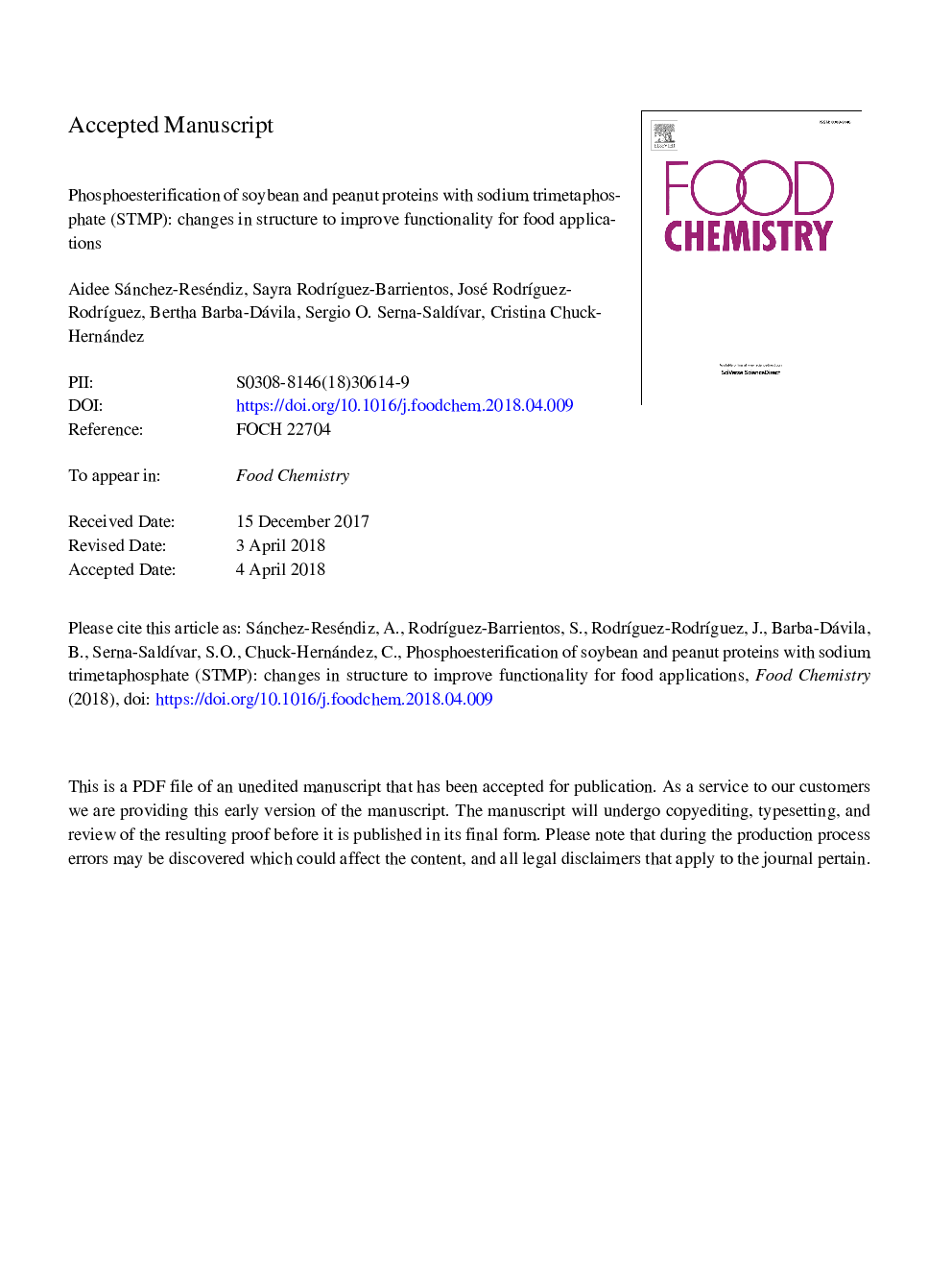| Article ID | Journal | Published Year | Pages | File Type |
|---|---|---|---|---|
| 7585006 | Food Chemistry | 2018 | 24 Pages |
Abstract
Soybean and peanut protein isolates underwent phosphorylation using sodium trimetaphosphate (STMP). Changes in functional properties and the influence of STMP (1, 2 or 3% w/w), pH (11.5 or 12.5), temperature (35 or 55â¯Â°C) and time (3 or 5â¯h) were evaluated. The highest degree of phosphorylation was achieved at 2% of STMP and pH 12.5. The best specific conditions varied according to the raw material: in soybean, 25% phosphorylation was achieved at 55â¯Â°C and 5â¯h whereas in peanut, 30% was reached at 35â¯Â°C and 3â¯h. The modified proteins showed an improved emulsifying activity (27.3% for soybean and 6.6% for peanut), whereas NSI for soybean increased more than three times and for peanut decreased by half. In vitro digestibility improved in both isolates around 1.5%. These results showed that phosphorylation with STMP of peanut and soybean proteins yielded isolates with a wide array of potential applications in food systems.
Keywords
STMPAOCSNSIFAIWSISPIWAIPPIAOACEmulsifying activityassociation of official analytical chemistsPeanut protein isolatePeanutanalysis of varianceANOVAFoam densitySodium trimetaphosphateIsolatesSoybean protein isolateFunctional propertiesSoybeanwater absorption indexwater solubility indexNitrogen solubility indexFTIRFourier transform infrared spectroscopyProteins
Related Topics
Physical Sciences and Engineering
Chemistry
Analytical Chemistry
Authors
Aidee Sánchez-Reséndiz, Sayra RodrÃguez-Barrientos, José RodrÃguez-RodrÃguez, Bertha Barba-Dávila, Sergio O. Serna-SaldÃvar, Cristina Chuck-Hernández,
